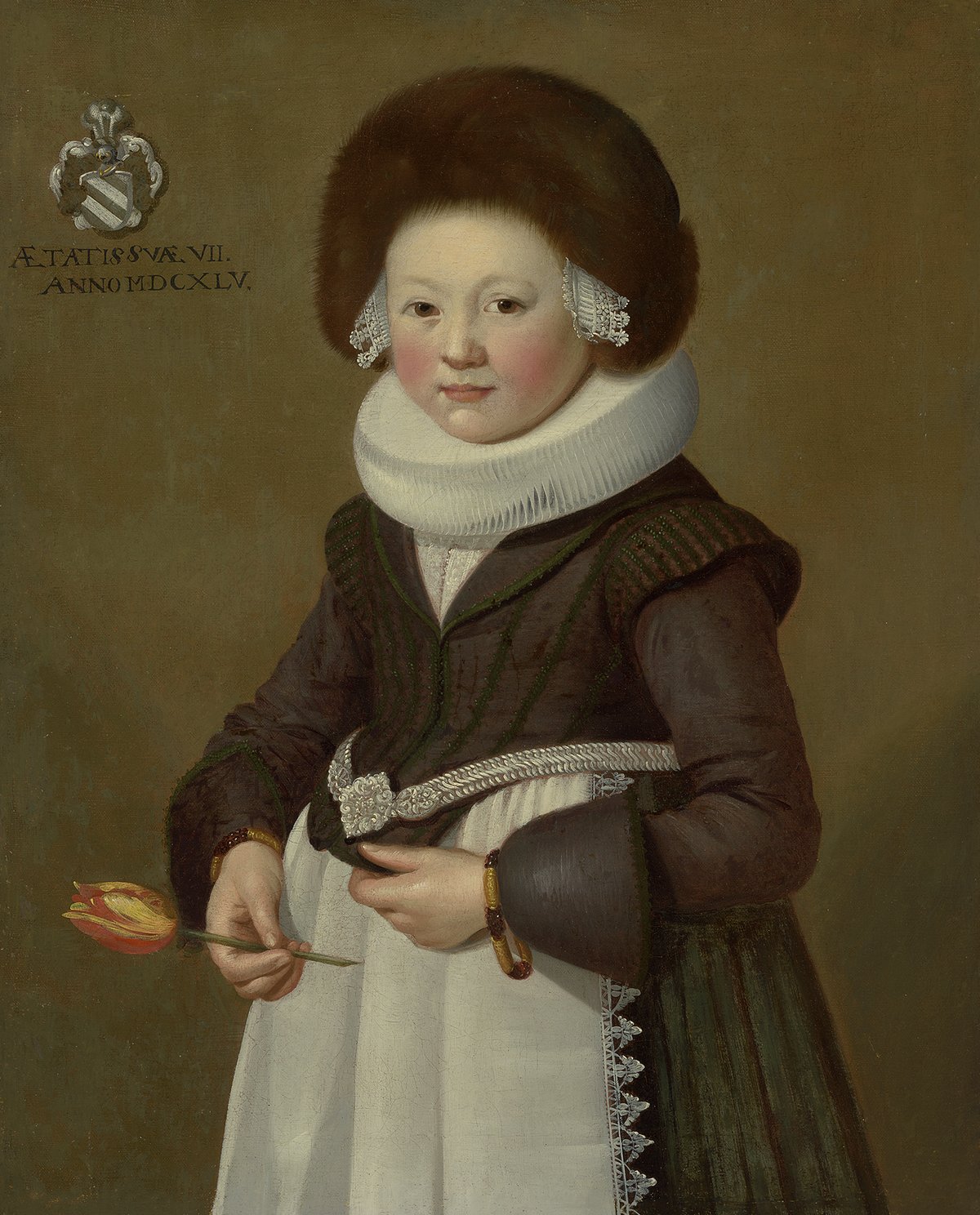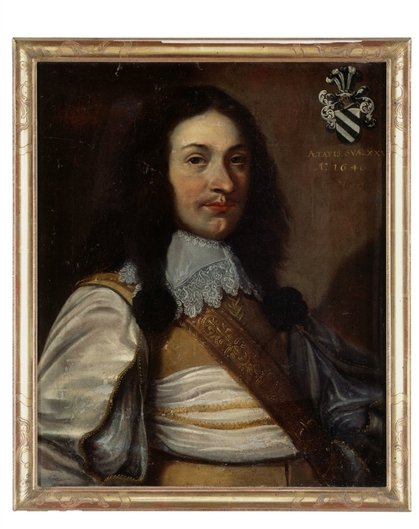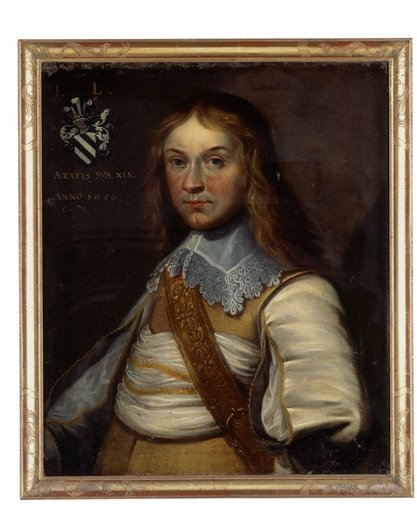Anna Maria Lavater

Conrad Meyer
Anna Maria Lavater, 1645
Öl auf Leinwand, 69,7 × 55 cm, Privatbesitz
Conrad Meyer returned to Zurich in December 1642 after his then customary years as a journeyman, which he undertook after his apprenticeship. With his solid training in his pocket and the many impressions he had gained abroad, he was immediately in demand as an artist in his home town. In Protestant Zurich, which was rather skeptical of religious images in line with Lutheran doctrine, portraits were one of the most lucrative sources of income, so it is not surprising that Conrad Meyer created over 200 portraits of famous and wealthy people from the city and beyond over the course of his career. He also benefited from the fact that the most important portrait painter, Samuel Hofmann, left the city for Basel and later Frankfurt soon after Meyer's return, making Conrad Meyer the most sought-after portraitist.
His early work is still strongly influenced by the style of Samuel Hoffmann. This early portrait of a child by Anna Maria Lavater also bears witness to this. It was commissioned by her father, Hans Caspar Lavater (1597–1654), then councillor of Winterthur. Following this successful portrait, he also painted portraits of her two brothers, Heinrich and Johannes.

Conrad Meyer
Bildnis Heinrich Lavater, 1646
Öl auf Leinwand, 65 x 56,5 cm, Schweizerisches Nationalmuseum

Conrad Meyer
Bildnis Johannes Lavater, 1650, Öl auf Leinwand, 64 x 56,5 cm, Schweizerisches Nationalmuseum
In the picture we see Anna Maria Lavater, then a little girl, dressed and posed like an adult. As in most cases, she shows Conrad Meyer against a neutral background. Her gaze meets the viewer directly, confidently and calmly, enveloped in the soft modulation of light and shadow. A stiff millstone collar and a fur cap frame her pale face, which is given life and fullness by her red cheeks. It is also typical of Meyer's portrait art that the hands are visible, but the figure manages without pomp or theatrical gestures. The inscription below the family coat of arms reveals its age. AETATIS SUE VII means roughly: Her age was 7, and ANNO MDCXLV below it means: In the year 1645.
In the picture we see Anna Maria Lavater, then a little girl, dressed and posed like an adult. As in most cases, she shows Conrad Meyer against a neutral background. Her gaze meets the viewer directly, confidently and calmly, enveloped in the soft modulation of light and shadow. A stiff millstone collar and a fur cap frame her pale face, which is given life and fullness by her red cheeks. It is also typical of Meyer's portrait art that the hands are visible, but the figure manages without pomp or theatrical gestures. The inscription below the family coat of arms reveals its age. AETATIS SUE VII means roughly: Her age was 7, and ANNO MDCXLV below it means: In the year 1645.
She is holding a tulip in her left hand at a slight angle. The flower can be read as a symbol of both beauty and transience, especially in the Baroque period. In the case of a portrait of a child, the aspect of blossoming and tenderness is likely to have been central. At the same time, the tulip is also a symbol of wealth and luxury, similar to the girl's lace-trimmed clothing. Tulips were relatively new in the 17th century and originally came from the Ottoman Empire. That is why they are surrounded by a certain air of exoticism – and that in the middle of Zurich with its strict morals.


